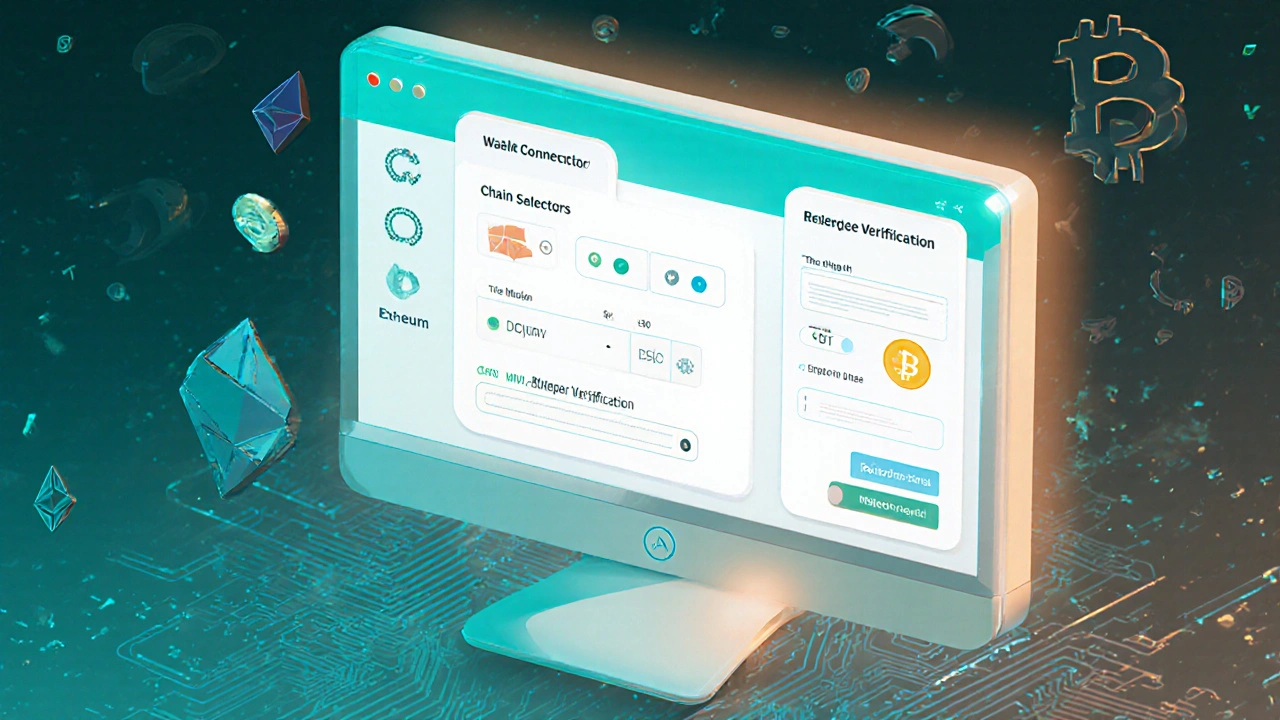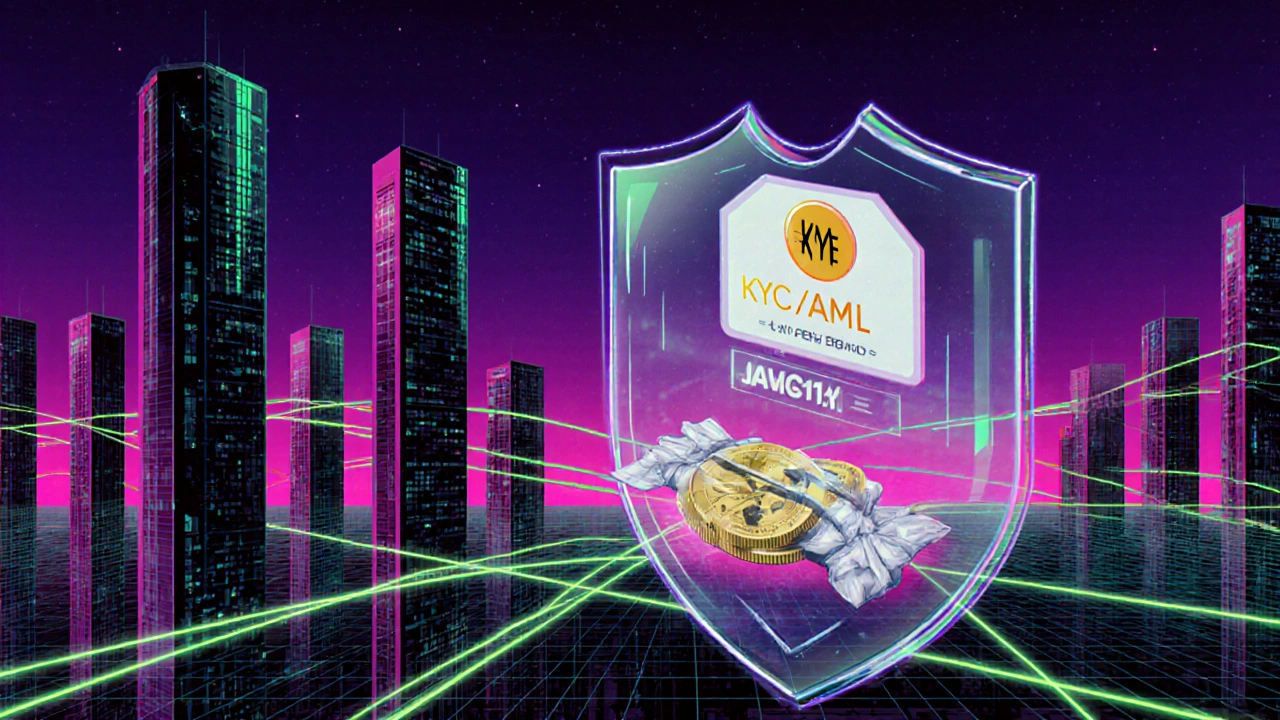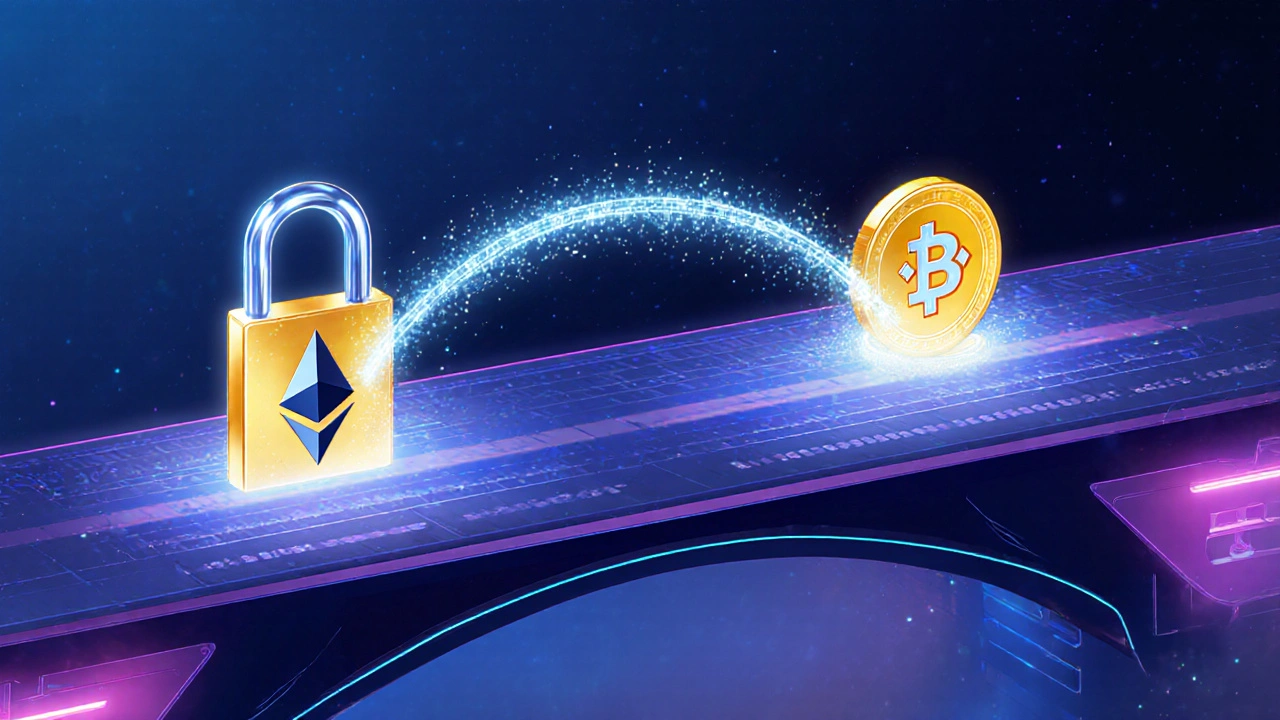When you want to move assets from one blockchain to another, you need a token bridge. A token bridge is a piece of infrastructure that locks or burns a token on the source chain and mints or releases an equivalent token on the destination chain, letting you use the same value across different ecosystems.
Key Takeaways
- Token bridges work by locking, issuing, and validating assets across chains.
- Choose a bridge based on security, fees, and supported networks.
- The basic flow involves depositing, verification, minting, and withdrawal.
- Always verify contract addresses and use reputable relayers.
- Common pitfalls include high fees, long settlement times, and bridge hacks.
What Is a Token Bridge?
Token Bridge is a service that enables the transfer of digital assets between two unrelated blockchains by locking the original asset on the source chain and issuing a wrapped representation on the target chain. It doesn’t move the original token; it creates a linked twin that can be redeemed later. The process is trust‑less when the bridge uses decentralized validators, but many popular bridges still rely on a handful of operators.
Types of Bridges You’ll Encounter
Not all bridges work the same way. Here are the most common patterns:
- Cross‑Chain Bridge relies on a set of validators or relayers to confirm transactions on both chains - e.g., Wormhole.
- Liquidity Bridge holds a pool of assets on the destination chain and releases them instantly when a lock event is detected on the source - e.g., Polygon Bridge.
- IBC (Inter‑Blockchain Communication) uses standardized messaging between Cosmos‑based zones to move tokens without a central custodian - e.g., Cosmos IBC.
Choosing the Right Bridge for Your Needs
Before you start moving tokens, answer three quick questions:
- Which source and destination chains do you need? Common pairs are Ethereum the most widely used smart‑contract platform, home to billions of USD in assets and Binance Smart Chain (BSC) a low‑fee, EVM‑compatible chain popular for DeFi projects.
- Do you prioritize security or speed? Decentralized bridges like Wormhole a cross‑chain bridge operating between Solana, Ethereum, BSC, and more offer high security but can be slower. Liquidity bridges such as Polygon Bridge a fast, low‑fee bridge that leverages a proof‑of‑stake sidechain are quicker but rely on custodial pools.
- What fee structure works for you? Some bridges charge a flat fee, others a percentage of the transferred amount. LayerZero, for example, bundles relayer fees into a single transaction cost.

Step‑by‑Step: How to Bridge Tokens
Below is a generic workflow that works for most EVM‑based bridges. Adjust the UI elements according to the specific bridge you choose.
- Connect Your Wallet. Open the bridge UI and click the wallet button. Most bridges support MetaMask, Trust Wallet, and Coinbase Wallet.
- Select Source and Destination Chains. Choose the token you want to move, the chain you’re on (e.g., Ethereum), and the target chain (e.g., BSC).
- Approve the Token Contract. The bridge needs permission to lock your tokens. A pop‑up will ask you to approve the Smart Contract the on‑chain code that handles token locking and event emission. Confirm the transaction and wait for it to be mined.
- Deposit the Tokens. Enter the amount, then hit “Deposit”. The bridge contract locks (or burns) the tokens on the source chain and emits an event.
- Relayer/Validator Verification. A network of Relayers off‑chain agents that monitor lock events and submit proof to the destination chain or a set of Validators trusted nodes that reach consensus on the transfer confirms the deposit.
- Mint or Release Wrapped Tokens. Once verification succeeds, the bridge contract on the destination chain mints a wrapped version of your token (e.g., “BSC‑USDC”). The UI will show a transaction receipt.
- Withdraw (Optional). If you later want to move the tokens back, repeat the process in reverse. The bridge will burn the wrapped token and release the original token on the source chain.
That’s the core loop. Some bridges add extra steps like “claim” screens or “gas‑less” approvals, but the underlying principles stay the same.
Security Checklist - Don’t Skip These Steps
Bridges have been high‑profile targets for attackers. Follow this checklist each time you bridge:
- Verify the bridge’s official URL and contract addresses on the project’s GitHub or reputable sources.
- Check audit reports. Audited bridges like LayerZero offers an open‑source SDK and has undergone third‑party security audits provide more confidence.
- Start with a small test amount (e.g., 0.001ETH) to confirm the flow works before moving larger balances.
- Watch for “bridge fee” spikes; some malicious relayers inflate fees during network congestion.
- Enable two‑factor authentication on your wallet and use hardware wallets for high‑value transfers.
Comparison of Popular Bridges (2025)
| Bridge | Supported Chains | Security Model | Typical Fee | Avg. Finality |
|---|---|---|---|---|
| Wormhole | Ethereum, Solana, BSC, Polygon, Avalanche | Validator set (13‑node) + audits | 0.25% + gas | 5‑10min |
| Polygon Bridge | Ethereum ↔ Polygon | Liquidity pool + proof‑of‑stake | 0.1% + minimal gas | 2‑3min |
| LayerZero | Ethereum, BSC, Avalanche, Fantom, Arbitrum | Ultra‑light node + relayer staking | 0.15% + relayer fee | 1‑2min |
| Cosmos IBC | All Cosmos SDK zones | Fully decentralized via IBC protocol | ≈0% (just gas) | 30‑60sec |
| Binance Bridge | Ethereum, BSC, Polygon, Terra | Custodial + audits | 0.2% + gas | 5‑7min |
Pick a bridge that aligns with your risk tolerance and the chains you need. For high‑value DeFi moves, many users favor Wormhole or LayerZero because of their audited validator sets. For cheap, frequent swaps between Ethereum and Polygon, the Polygon Bridge is usually the fastest.

Troubleshooting Common Issues
- Transaction stuck on source chain. Check gas price; low gas can delay lock events. Resubmit with a higher fee.
- Wrapped token never appears. Verify the bridge’s relayer status. Some bridges pause operations during attacks; wait for official announcements.
- Wrong contract address. Always double‑check the address in the UI against the official repo. If mismatched, abort and report.
- High fees after a network spike. Bridge fees are often dynamic. Consider waiting for off‑peak hours or switching to a different bridge.
Future Trends: Where Token Bridging Is Heading
By 2026 we expect three big shifts:
- Full Decentralization. Projects like Axelar offers a permissionless network of validators that can route any token across any EVM‑compatible chain aim to eliminate custodial pools entirely.
- Layer‑Zero Messaging. Instead of separate bridges, emerging protocols will use a universal message layer that handles token, data, and NFT transfers in one go.
- Regulatory Standards. New compliance frameworks may require bridges to embed KYC/AML checks, especially for fiat‑pegged stablecoins.
Staying up‑to‑date with audits and community signals will keep you safe as the landscape evolves.
Frequently Asked Questions
What is the difference between a locked token and a wrapped token?
A locked token stays on its original chain but is rendered unusable while the bridge holds it in a smart contract. A wrapped token is a new token minted on the destination chain that represents the locked asset 1:1. When you reverse the bridge, the wrapped token is burned and the original token is released.
Are cross‑chain bridges safe for large sums?
Safety depends on the bridge’s security model. Decentralized validator sets with multiple audits (e.g., Wormhole, LayerZero) are generally safer than fully custodial bridges. Still, it’s wise to split large moves into smaller batches and keep most funds on a hardware wallet.
How long does a bridge transfer take?
It varies by bridge and network congestion. Liquidity bridges like Polygon can finalize in a few minutes, while validator‑based bridges like Wormhole may need 5‑10minutes. IBC transfers on Cosmos can be under a minute.
Do I need to pay gas on both chains?
Yes. You pay gas to lock the token on the source chain and again to mint (or claim) the wrapped token on the destination chain. Some bridges bundle the second fee into the first transaction, but you still need enough native token on both sides.
Can I bridge NFTs the same way?
Yes, many bridges support ERC‑721 and ERC‑1155 tokens. The process mirrors fungible token bridging: lock the NFT on the source chain and mint a wrapped NFT on the target chain. Check the bridge’s documentation for any size or royalty restrictions.

